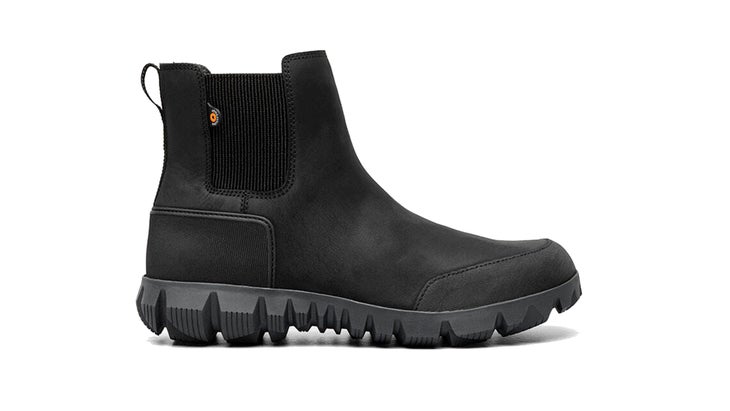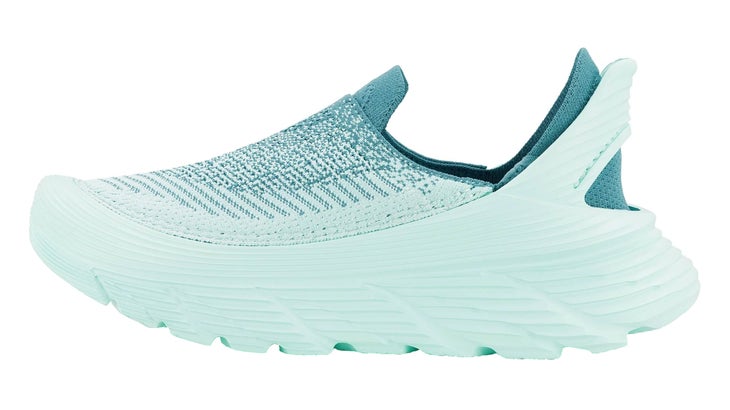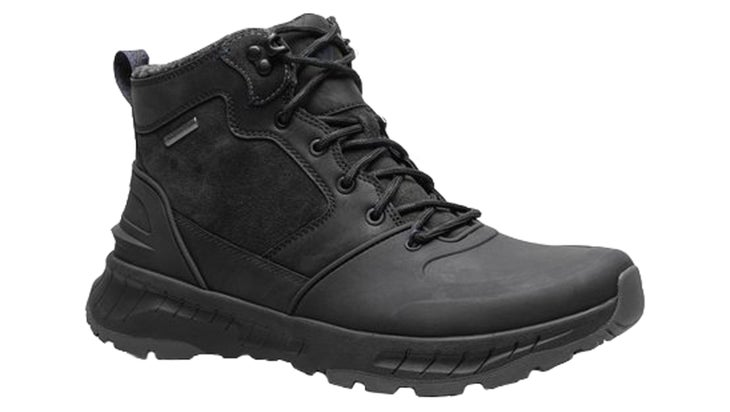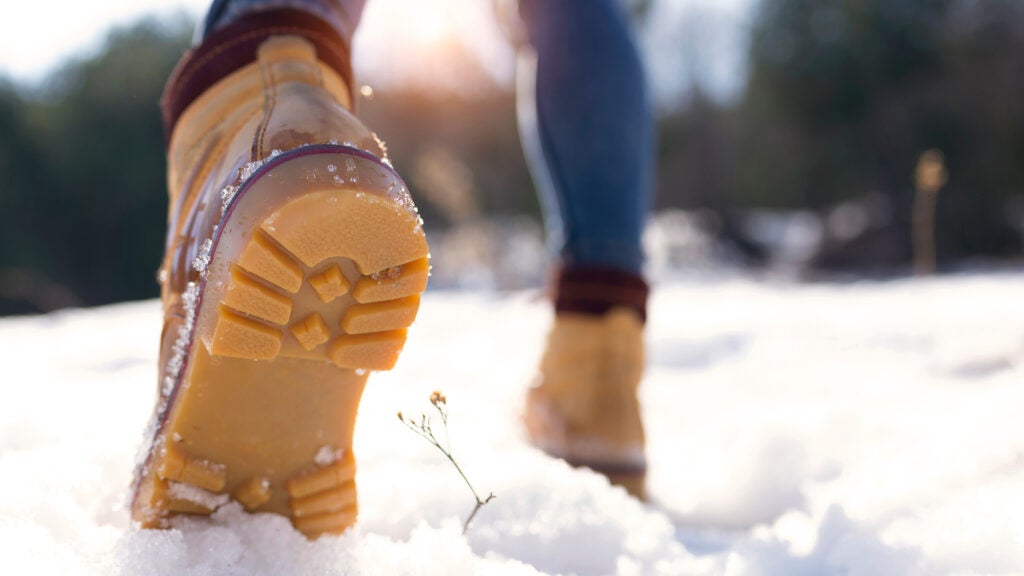No products in the cart.
Outdoor Adventure
The Best Après Shoes of 2024
Most little luxuries feel good after a long day on the mountain, from a cold beer to a toasty seat warmer. But nothing compares to the sweet relief of taking off our clammy ski boots and stepping into lighter, comfier footwear. These bundles of warmth are so cozy that you’ll want to wear them around the house long after your feet have recovered.
Winners at a Glance
- Allbirds Wool Runner Fluffs
- BOGS Arcata Urban Leather Chelsea
- Rossignol Chalet Slippers
- Oofos OOMG Boot
- Forsake Whitetail Mid
The Reviews: The Best Après Shoes of 2024
Allbirds Wool Runner Fluffs ($120)

Size: Men’s 7-14, Women’s 5-11
These fuzzy sneakers made one of our testers break her “no shoes on in the house” rule—after wearing them out to dinner and the movies, she came home and didn’t want to take them off. Regeneratively-sourced ZQ Merino wool, cut and fluffed so it feels like shearling, makes up the bulk of these shoes. More eco-cred? The cushy midsoles and bouncy outsoles are made of a proprietary sugarcane-based material called SweetFoam rather than the usual EVA. The Fluffs represent a significant commitment to sustainability—a consistent theme for Allbirds—while keeping your feet snug and Muppet-cute all winter long. Beware, though, that one wrong step in slushy snow will require a footwear change.
Bottom Line: Casual, eco-friendly shoes that feel as cozy as they look
BOGS Arcata Urban Leather Chelsea ($160)

Size: Men’s 7-14, Women’s 6-12
Our testers praised these boots as the most versatile and stylish they tried this winter. The classic Chelsea aesthetic fits in on city streets and is easy to slip in and out of when you’re balancing on one foot to avoid the parking lot slush. But unlike other Chelsea boots we’ve tested in the past, these are comfortable from the very first wear—no break-in period required—and have impeccable traction thanks to chunky rubber lugs, which kept us stable on ice and snow but didn’t hold onto mud. A fleece lining keeps feet warm, and the insoles are sweat-wicking, odor-fighting, and eco-friendly thanks to algae-based EVA and wood-based fiber.
Bottom Line: A stylish Chelsea boot for all situations
Rossignol Chalet Slippers ($99)

Size: Women’s 5-9.5, Men’s 7-12
These are easy to slip on and off like a pair of camp slippers, but feel more like structured shoes in terms of stability and support. One tester said, “these felt like recovery shoes without looking super bulky or conspicuous.” Our sore, post-skiing arches appreciated the EVA padding throughout the rockered midsoles, while the rest of our feet enjoyed the cozy-but-not-too-heavy upper insulation and a wool-like synthetic lining. The outsoles, made with 30 percent recycled rubber, have a tight lug pattern that was just deep enough to keep us safe on slushy driveways, while the DWR-coated nylon upper repelled light rain and snow.
Bottom Line: Recovery shoes wearing a plush disguise
HOKA Restore TC ($110)

Size: Unisex, 4-14
Unsurprisingly, the running brand known best known for its over-the-top comfort did not disappoint with its first recovery-oriented shoe. Technically, these sneakers were designed for the feet of runners after pounding hot summer pavement, but we couldn’t resist wearing them after a day on the slopes all the same. (Since they offer little insulation and no waterproofing, this pair is best with thick socks, on sunny days, or when you’re safely in the car.) At 11.3 ounces, these bouncy slip-ons come with a stretchy, lightweight polyester knit upper that makes them easy to pull on and off. Testers loved the cushy sugarcane-based EVA midsole, and while the EVA-based outsole is grooved enough to provide basic traction in various conditions—we’ve scrambled over slick boulders while wearing these just as successfully as we ferried ski gear to and from the car.
Bottom Line: A light, sustainable recovery shoe for dry conditions.
Forsake Whitetail Mid ($170)

Size: Men’s 8-14
Our male-identifying testers fell hard for the rugged—in both looks and durability—combination of full-grain leather, suede, and 200-gram Thinsulate insulation on these boots. These mids look stylish enough for an apres session on the patio of the Four Seasons at Vail, but still appropriate to wear around the office. They’re more hiking boot than slipper, with molded rubber on the heel and toe for extra protection and durability. They’re also waterproof for true winter protection. “These are extremely comfortable given the amount of support and stability provided,” quipped one tester, who had to be prodded to give equal testing time to the other shoes in this lineup after he started wearing the Whitetail Mids almost every day.
Bottom Line: The do-it-all function and look of a leather boot, with the warm and coziness of a winter shoe
How to Buy
The most important factor when it comes to aprés footwear is comfort, which is largely subjective. Beyond trying on shoes in-person and wearing them around the store before buying, you should also think about how you’ll be using them: Will you wear them mostly indoors or outdoors? Will they sit on a muddy boot rack to dry between wears or do you plan to stuff them into a duffel bag? Does it rain more than it snows where you live? Are they mostly going to be seeing slushy parking lots or bougie hotel patios? These are the questions to ask as you consider how much warmth, weight, waterproofing, and traction you need in a pair of aprés shoes.
When it comes to warmth, pay attention to how the shoes are insulated. Winter linings like synthetic Thinsulate or shearling wool provide warmth and some degree of breathability, whereas down or synthetic lofted insulation can quickly overheat your feet with active use, but provide superior warmth. Remember that brand temperature ratings for winter boots are almost never verified by a third party—don’t assume your feet will be warm down to negative 40 simply because the label says so.
How We Tested:
- Number of testers: 5
- Number of products tested: 16
- Number of test states: 4
- Number of beers spilled: 5 (that we’ll admit to, anyway)
- Number of falls in ski resort parking lots: 2
We wore these slippers, boots, and puffs just about everywhere. From early morning errands to late-night dinner parties, we walked these shoes over icy sidewalks, puddle-filled parking lots, muddy yards, and snowy trails. We also paid close attention to our emotional reaction when taking them off or putting them on (seriously). The pairs that brought us the most joy, looked the best, and proved most useful for all manner of après activities made this list.
Meet Our Testers
Svati Kirsten Narula
Sante Fe-based Svati Kirsten Narula is a writer and Outside contributing editor. She enjoys skinning up the local ski hill with her dogs when the lifts aren’t running, either before or after work—which means her après shoes really have to work as all-day shoes.
Aleta Burchyski
Aleta Burchyski is a writer and former Outside editor in Santa Fe. Years of dance, hiking, and nordic skiing have taken a toll on her feet, so she’s always in the market for a good après-nordic and recovery shoe. This year she was thrilled (not) to find that her feet grew a quarter of a size since the birth of her second son, and particularly appreciated finding winter shoes that run wide in the toe box.
Eric Ward
Eric Ward is a tech enthusiast, knuckle-dragging snowboarder, and reluctant trail runner. He appreciates a minimalist running shoe (a la “Born to Run”) but yearns for cloud-like comfort when it comes to après footwear.
Source link

